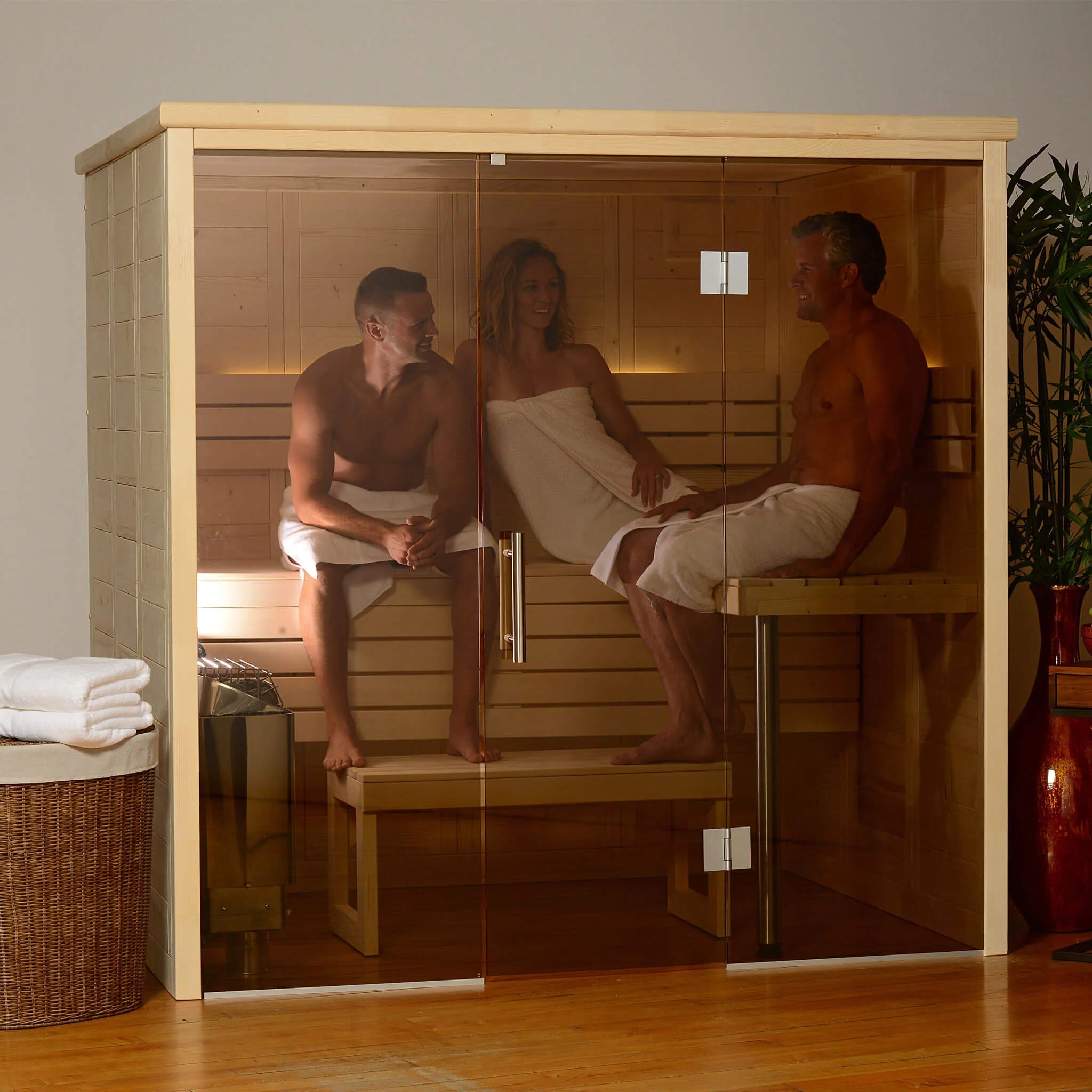7 Easy Facts About Traditional Sauna Described
Wiki Article
The Only Guide for Traditional Sauna
Table of ContentsSome Known Incorrect Statements About Traditional Sauna Some Known Factual Statements About Traditional Sauna Some Ideas on Traditional Sauna You Should KnowA Biased View of Traditional SaunaThe Definitive Guide to Traditional Sauna
The majority of the weight shed in a sauna is water loss and is re-gained upon rehydrating. Without a doubt sauna can be an essential part of a healthy and balanced weight loss program. To take a look at the differences between traditional and IR saunas, I will certainly divide these into proven, theoretical, and made distinctions.Therefore, the most popular point in the saunawhich goes to the ceiling straight above the sauna heateris generally in between 185 and 190 F. Claims that a traditional sauna surpasses 200 F is simply not real and not suitable for electric saunas marketed in the United States. The temperature for a far-infrared sauna is generally set between 120 and 140 F; however, unlike the traditional sauna, the objective in and IR room is not to attain a high temperature level.
Due to this, the temperature difference is almost unimportant, considering that profuse sweating causes both sauna kinds, but the approach of heating the body is various. In an IR sauna the bather will certainly feel warm and will sweat a lot, yet at much reduced temperature levels (Traditional Sauna). Thus, if the goal is to invest longer amount of times in the sauna, the IR sauna is a great selection
When a typical sauna has been effectively warmed, the sauna walls are cozy, the air temperature has achieved set temperature level and the rocks are very warmed. As a fascinating side note, the warmed walls and the rocks are giving off far-infrared warmth, integrated with the warmed air, to create an "covering warmth".
The Greatest Guide To Traditional Sauna

When the heat is accomplished, the elements cycle on and off to maintain the heat. Most conventional sauna users enjoy pouring water over the rocks to create vapor to elevate sauna moisture levels. The advantages of putting water over the rocks consist of: making the area more comfortable, moistening the nasal passages, and enabling the use of aromatherapy by mixing essential oils with the water.

When the power gets in the body, it triggers the body temperature level to increase and eventually results in sweating. In an infrared sauna it is essential for the emitters/heaters to remain on virtually frequently. Considering that there is no mass of rocks to preserve heat, the sauna will certainly cool down if the emitters closed off.
As discussed above, the sauna bather in an infrared space intends to place himself in front of running emitters to obtain maximum take advantage of the heat. The home heating time for the two spaces can be very various, depending upon just how the check this site out rooms are utilized. For a conventional sauna, a bather should enable 30-40 mins for the room to accomplish a wanted temperature level and to appropriately pre-heat the rocks.
Facts About Traditional Sauna Uncovered
A well built sauna will commonly achieve a temperature of 150-160 F in concerning 30-40 mins. For hotter temperature levels, the space may need to warm for a longer duration.

Standard saunas often tend to be bigger (hence make use of more electrical energy) than infrared saunas, although conventional saunas are definitely available in one and 2 individual sizes. For a two-person typical sauna, 5x6 or 5x7 size is most prominent. The leading bench can easily seat 2 or three individuals and is likewise long enough to exist down during the sauna session.
The Basic Principles Of Traditional Sauna
The average cost per kWH of electrical power in the U.S. is around $0.11, so a 4.5 kW heater will cost around $.50 to compete one hour, if the heating system runs continuously for one hour. Normally a sauna heating system will certainly run for 75% of the first hour and 50% of subsequent hours on since the components cycle once the set temperature is achieved.
There is a seldom reviewed distinction in the social experience in between the 2 spaces. While our culture more has actually shed some of the social advantage of the conventional sauna experience, it can be very socially gratifying (Traditional Sauna). From family time in the sauna, to heart-felt discussions with better halves, to sauna partiesthe traditional sauna experience can cause intimate interacting socially
The 2-Minute Rule for Traditional Sauna
A lot of higher end infrared spaces include tinted light therapy, stereo and full-glass fronts. The size of a lot of rooms enable for 2 people to pleasantly use the space, while some layouts may allow for a third or fourth person to utilize the area. Customized infrared rooms are likewise readily available, with room sizes readily available approximately 7' x 8' x 7' high.Report this wiki page